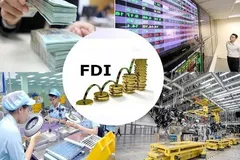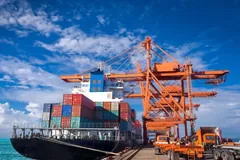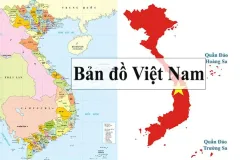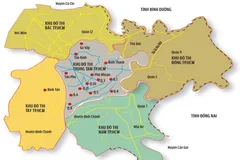
The Resolution was issued to implement Conclusion 47 of the Politburo, which, in principle, approves the establishment of a comprehensive international financial center in Ho Chi Minh City and a regional financial center in Da Nang, both expected to be operational in 2025.
Despite this ambitious plan, several critical questions remain unanswered. What exactly constitutes a "comprehensive" international financial center in Ho Chi Minh City, and how does it differ from a "regional" one in Da Nang? Does Vietnam truly need two financial centers, or should it prioritize developing one first? Ho Chi Minh City, with its stronger financial infrastructure, might be the logical choice to lead the way, allowing it to generate a spillover effect that could later benefit Da Nang.
Some officials in Da Nang have suggested that, to avoid redundancy with Ho Chi Minh City, their city could specialize in green finance or fintech. However, this proposal fails to clarify the regional scope of Da Nang's financial ambitions. If the city's financial center is restricted to fintech and green finance, does that mean Ho Chi Minh City will not be able to develop these fields? Such a division seems impractical, especially given Ho Chi Minh City’s well-established universities and research institutes capable of producing top-tier fintech professionals.
The Financial Times has commented on the potential pitfalls of Vietnam having two financial centers. If not managed carefully, internal competition between them could arise, leading to a "race to the bottom"—where financial hubs attempt to attract investment by relaxing regulations and lowering tax rates, ultimately weakening the country’s financial integrity.
The fragmentation of regulatory frameworks can have serious consequences. At the 2020 Global Banking Summit, Axel Weber, chairman of UBS and former head of the Bundesbank, highlighted why Frankfurt and Paris have failed to surpass London as Europe’s dominant financial hub. He pointed to regulatory fragmentation as a primary issue—where competing policies create inefficiencies and prevent any single city from achieving global dominance. Vietnam must take note of this lesson and ensure that its financial centers complement rather than compete against each other.
To avoid these pitfalls, the Vietnamese government must craft a well-defined strategy, clearly delineating the roles and functions of each financial center. A unified legal and policy framework is crucial to ensuring coordination and sustainable growth. A strong reference point is the United Arab Emirates (UAE), where Dubai has been positioned as a major financial hub while Abu Dhabi focuses on artificial intelligence (AI), technological innovation, and long-term investments. Despite these distinctions, both cities successfully integrate fintech and green finance into their financial systems, rather than treating them as exclusive to one center.
At present, discussions surrounding the development of international financial centers in Vietnam have largely revolved around physical infrastructure—grand buildings, cutting-edge technology, and state-of-the-art facilities aimed at attracting global financial institutions. However, focusing too much on "hardware" without addressing "software"—such as governance, legal frameworks, and institutional trust—could result in wasted resources.
General Secretary Tô Lâm has warned that excessive waste poses a more significant risk than corruption. This concern is particularly relevant when considering large-scale financial projects. A recent analysis by the Financial Times, published on November 26, 2024, titled "How Shanghai’s Ambition to Become the ‘Future of Finance’ Collapsed", highlights the primary reason why global investors have been withdrawing from Shanghai’s financial center: restrictive capital controls. Despite promises to gradually loosen these restrictions, China’s failure to follow through has eroded investor confidence. The key takeaway? Trust is the foundation of any successful financial center. Without it, even the most impressive infrastructure investments will fail to deliver results.
Vietnam must avoid Shanghai’s missteps. If Ho Chi Minh City and Da Nang are to thrive as financial hubs, they must foster an environment of transparency, regulatory stability, and investor confidence. International financial institutions and investors must be assured that Vietnam’s financial centers operate under a stable, predictable legal framework that protects their interests.
Vietnam’s ambition to establish world-class financial centers in Ho Chi Minh City and Da Nang is commendable, but success will require more than just high-rise buildings and cutting-edge technology. Trust, regulatory clarity, and strategic planning will determine the fate of these financial hubs.
By learning from international experiences—both successes and failures—Vietnam can position itself as a formidable player in global finance. However, careful coordination between its financial centers, a strong institutional framework, and a commitment to sustainable development will be essential to realizing this vision. If done right, Ho Chi Minh City and Da Nang could become Southeast Asia’s next great financial powerhouses, ushering in a new era of economic growth and global investment for Vietnam.
The road ahead is challenging, but with the right policies and strategic direction, Vietnam’s financial centers have the potential to achieve long-term success on the international stage.




















